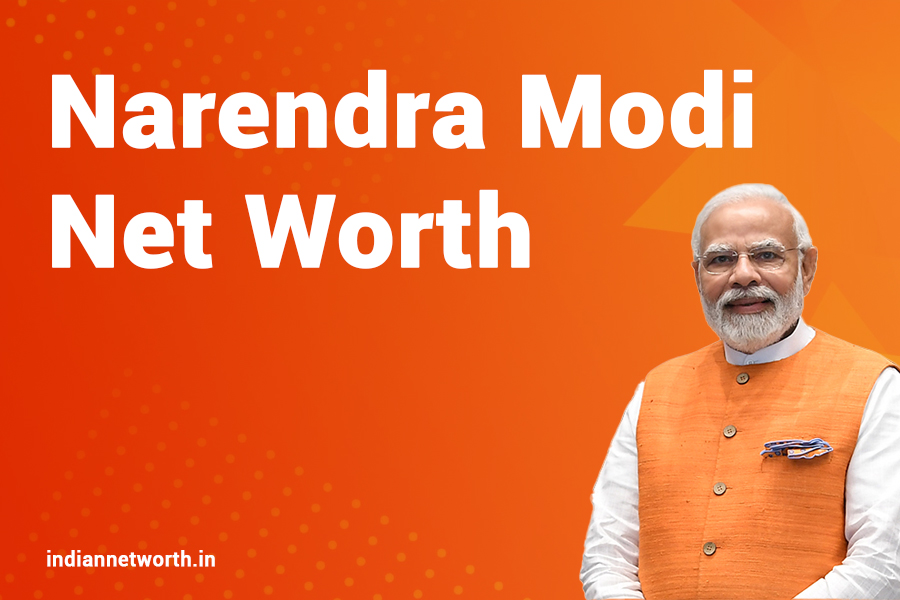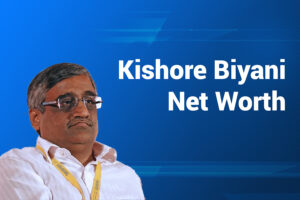Narendra Modi, the current Prime Minister of India, stands as one of the most influential political figures in the nation today. His remarkable journey, which began from a humble background, has led him to become the leader of the largest democracy in the world, making his story both inspiring and significant. As of 2025, many people are curious about his financial standing and the wealth he has accumulated over the years. Therefore, we will delve into Narendra Modi’s net worth, exploring various aspects of his wealth, assets, and the key factors that have contributed to his financial growth throughout his political career.
Understanding Narendra Modi’s Background
Born on September 17, 1950, in the small town of Vadnagar, Gujarat, Narendra Modi grew up in a modest family that made a living through tea vending. The early experiences of his childhood, characterized by simplicity and hard work, significantly shaped his character, instilling in him a strong sense of determination and resilience. Before embarking on his political journey, Modi dedicated his youth to the RSS (Rashtriya Swayamsevak Sangh), where he honed his leadership skills and ideological beliefs. He later joined the Bharatiya Janata Party (BJP), where he began his political career at the grassroots level within Gujarat. This journey ultimately culminated in his role as the Chief Minister of Gujarat from 2001 to 2014, and later, as the Prime Minister of India.
Modi’s rise in the political landscape is marked by his unwavering focus on comprehensive economic reforms, the ambitious expansion of infrastructure, and a variety of impactful development initiatives such as “Make in India” and “Digital India.” These initiatives have not only significantly influenced his public reputation but also played a crucial role in enhancing his financial standing and attracting both domestic and international investments.
Narendra Modi’s Net Worth in 2025
What is Narendra Modi’s net worth in 2025?
As of 2025, Narendra Modi’s net worth is estimated to be around ₹3.2 crore (approximately $400,000 USD). This figure primarily consists of his financial savings, real estate holdings, and various other investments. Modi’s financial portfolio reflects a relatively modest lifestyle when compared to many other politicians and celebrities in India, emphasizing his commitment to public service and governance rather than prioritizing personal wealth accumulation. His approach is indicative of his dedication to the nation’s welfare over material gains.
Assets Breakdown
Narendra Modi’s net worth consists of various assets, including movable and immovable properties. The following table provides a detailed overview:
| Asset Type | Estimated Value |
|---|---|
| Savings | ₹1.75 crore (approx 54.6%) |
| Real Estate | ₹1.4 crore (approx 43.8%) |
| Investments | ₹0.05 crore (approx 1.6%) |
Detailed Assets Analysis
- Movable Assets (Savings)
- Modest savings typically include bank deposits, investments in shares, and fixed deposits, all of which serve as vital components for financial stability.
- A majority of Modi’s savings are strategically held in nationalized banks, illustrating a cautious and prudent financial approach that prioritizes security and reliability over high-risk investments.
- Immovable Assets (Real Estate)
- The properties owned by Modi include a house in Ahmedabad, which reflects his deep-rooted connections to the region, as well as a modest home in Delhi that serves as his primary residence during his tenure in office.
- Compared to the extensive real estate portfolios of other political leaders, Modi’s real estate holdings remain relatively modest, emphasizing his commitment to governance and public service rather than prioritizing personal wealth accumulation.
- Investments
- Modi’s investments primarily consist of government bonds and shares in various public sector undertakings, reflecting a conservative approach to asset management.
- These investments are maintained at a minimal level, suggesting a strategic focus on liquidity and security, allowing for greater financial flexibility in uncertain economic times.
Income Sources
Narendra Modi’s income primarily comes from his role as the Prime Minister of India. The following section outlines his salary and any additional sources of income.
Salary as Prime Minister
As of 2025, Modi’s salary as Prime Minister stands at ₹2.8 lakh per month (approximately $3,500 USD). This salary includes allowances, benefits, and other perks associated with the position.
Other Sources of Income
- Authoring Books: Modifying his persona as a prominent public figure, Modi has authored several insightful books that not only share his experiences and philosophies but also enhance both his income and public profile significantly. His literary contributions reflect his vision and leadership style, appealing to a wide audience and solidifying his status in the literary world.
- Speaking Engagements: Occasionally invited to speak at prestigious global platforms and conferences, these speaking engagements provide him with opportunities to share his insights and experiences. While these events do contribute additional income, they do not occur on a regular basis, making each engagement particularly valuable for both financial gain and public influence.
Comparison with Other Political Figures
To better understand Modi’s financial stature, it is beneficial to compare his net worth with that of other notable political figures in India.
Net Worth Comparison Table
The table below provides a concise overview of the estimated net worth and political positions of several prominent political figures in India.
| Political Figure | Estimated Net Worth | Position |
|---|---|---|
| Narendra Modi | ₹3.2 crore (approx $400,000 USD) | Prime Minister |
| Rahul Gandhi | ₹4,000 crore (approx $500 million USD) | Congress Leader |
| Amit Shah | ₹4,000 crore (approx $500 million USD) | Home Minister |
| Sonia Gandhi | ₹2,510 crore (approx $315 million USD) | Congress Chairperson |
This data highlights the significant wealth and influence these leaders hold within the political landscape of India, reflecting their varying levels of financial assets and their respective roles in shaping national policies.
Observation: Compared to other leaders, Modi’s net worth is substantially lower, indicating a different approach to wealth and governance.
Public Perception and Accountability
Modi’s earning and spending habits are closely scrutinized due to his high-profile role as a political leader in India. His deliberate approach towards maintaining a modest lifestyle resonates with many citizens, earning him respect among constituents who appreciate leaders focused on public service rather than personal wealth accumulation. This commitment to frugality reflects his dedication to the needs of the people.
Skepticism occasionally arises regarding assets acquired during office tenure. However, Modi has consistently maintained transparency regarding his finances, repeatedly declaring assets publicly as mandated by Indian law.
Community Initiatives and Philanthropy
Modi’s role extends beyond politics with significant efforts in community and social initiatives. Various programs under his government have targeted poverty alleviation, education, healthcare, and rural development.
Major Initiatives Include:
- Swachh Bharat Abhiyan: Aiming to improve cleanliness and sanitation across the nation.
- PM Kisan Samman Nidhi: Providing financial support to farmers.
- Pradhan Mantri Awas Yojana: Ensuring affordable housing for all.
Philanthropic Efforts
While his financial contributions to charitable organizations are less documented, Prime Minister Modi actively promotes collective efforts through his government’s various initiatives, which significantly benefit rural populations and underprivileged sections of society. His approach to governance not only emphasizes economic development but also reflects a keen awareness of social responsibilities, aiming to uplift the most vulnerable communities across the nation.
The Source of Wealth Growth: Influencing Factors
Several factors influence Modi’s wealth and financial strategies, including:
- Public Salary and Allowances: As a dedicated public servant, his income is largely derived from government remuneration, which includes a combination of salary, benefits, and allowances that reflect his role and responsibilities.
- Political Tenure: His continued leadership positions may influence financial stability but also raise scrutiny regarding transparency and the need for regular auditing to ensure ethical practices.
- Public Image: His unwavering focus on clean governance and minimal personal gain significantly enhances his reputation positively, often overshadowing any lingering financial concerns that critics might raise.
- Public Service Initiatives: As outlined in previous sections, his steadfast commitment to various national programs does not typically yield immediate financial benefit but may foster long-term value for the community and the nation as a whole.
Conclusion: The Legacy of Narendra Modi
As Narendra Modi continues to shape the political landscape of India, his impressive net worth illustrates an unconventional but admirable approach to leadership that transcends mere financial metrics. Instead of pursuing personal wealth for its own sake, he emphasizes a profound commitment to public service and community enhancement, focusing on the well-being of the citizens. As all eyes are on India’s future, the financial panorama of its leaders often reflects broader societal values—one that prioritizes dedication and integrity over material accumulation, fostering a sense of trust and accountability among the populace.
While Modi’s focus remains on governance and development, his financial status symbolizes integrity and accountability, showcasing an image of a leader vulnerable to public scrutiny yet resilient in democratic service.
For those interested in tracking the financial status of political leaders, it is crucial to consistently monitor developments and their broader implications on evolving governance strategies. Whether through public service, community initiatives, or various economic policies, the insights gleaned from Modi’s financial journey remain highly pertinent for both current leaders and future political figures. Understanding these dynamics can help inform effective governance and accountability in public office.






